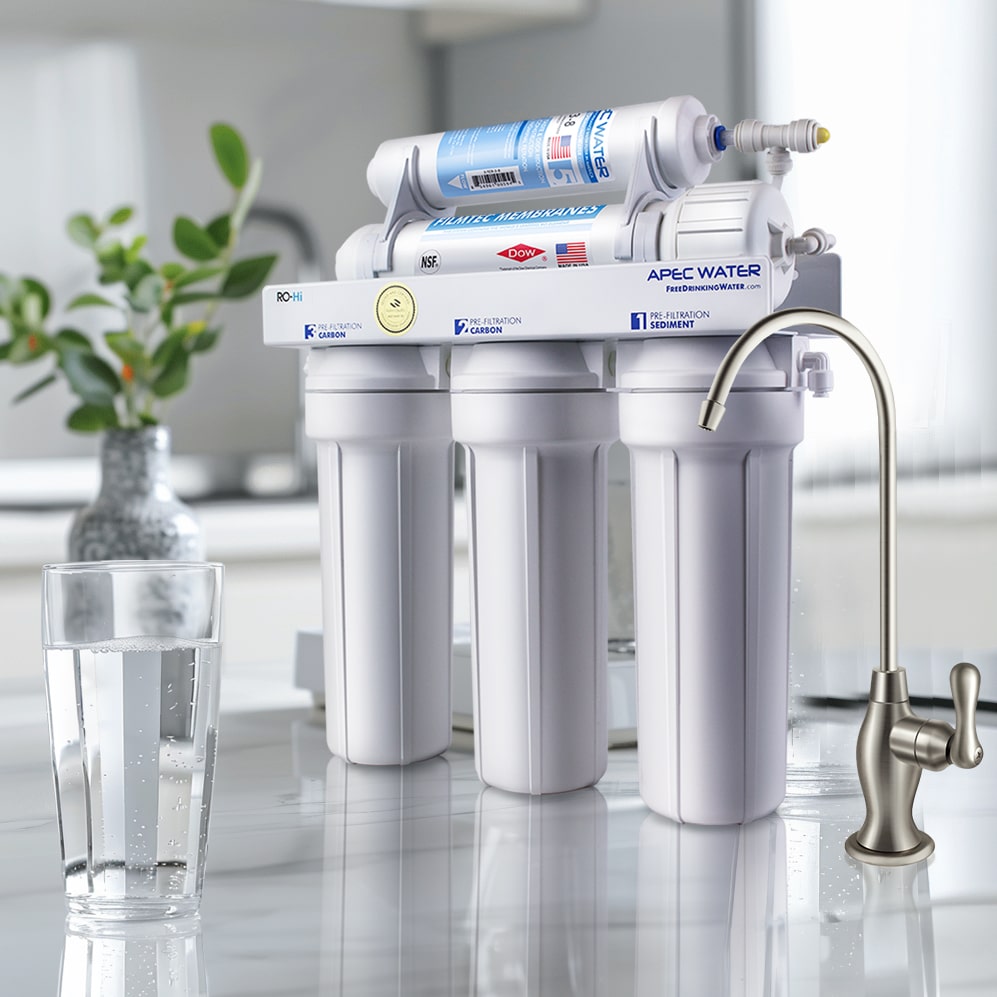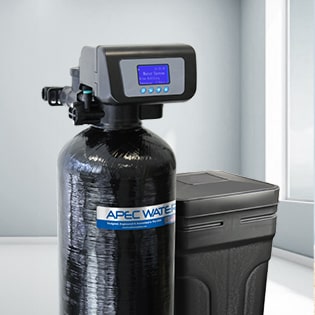Arsenic in water is a silent threat that many are unaware of.
This dangerous contaminant lurks unseen, tasteless, and odorless, posing serious health risks to those exposed. The presence of arsenic in our drinking water is not just an issue for developing countries. It's right here at home too.
With long-term exposure leading to severe health conditions like cancer and cardiovascular disease, it's crucial we take the risk of arsenic in water seriously, and take the necessary steps to eliminate it from the water in our homes and communities.
The Threat of Arsenic in Drinking Water
Imagine a silent, invisible enemy lurking right within your home - arsenic. This naturally occurring mineral poses serious health risks, such as skin, bladder, and lung cancer, when present in drinking water.
You may wonder how this stealthy contaminant finds its way into our precious H2O.
How Does Arsenic Get Into Our Water?
Industrial Processes and Arsenic Contamination
Arsenic isn't some mysterious entity; it's the result of many industrial operations that are essential to our lives. Mining waste is often teeming with arsenic, which can seep into groundwater sources over time.
Metal production isn't innocent either. It generates copious amounts of arsenic as residues that could end up polluting nearby bodies of water if not managed properly.
Burning fossil fuels or operating coal power plants releases particles laden with arsenic into the air. These particles eventually settle onto land surfaces or directly infiltrate surface waters, causing contamination issues for many communities around us.
Health Risks Associated with Arsenic Exposure
Arsenic can be more than just an environmental health hazard when ingested regularly through drinking water or even certain foods such as rice plants that have absorbed up arsenic. Elevated cancer and cardiovascular disease rates have been linked to chronic exposure from such contaminated sources.
In severe cases where the aggregate arsenic exposures are too high from consuming contaminated food and drink over time, acute poisoning symptoms including vomiting, abdominal pain, diarrhea, and numbness can occur. If not treated promptly, these symptoms could lead to death.
This isn't merely speculation - numerous studies have confirmed these effects. For instance, a recent EPA analysis showed how elevated bladder cancer rates were directly linked back to communities with higher-than-average drinking water levels of this dangerous contaminant.
The Impact of Arsenic on Pregnant Women and Infants
Pregnant women exposed to high levels of arsenic may be at greater risk for adverse pregnancy outcomes, such as miscarriage or stillbirth, and their infants could experience developmental delays and lower cognitive abilities due to chronic exposure. Furthermore, their infants could experience developmental delays and lower cognitive abilities later in life due to chronic arsenic exposure.
Testing Your Water for Arsenic
The nature of arsenic being undetectable by sight, taste or smell necessitates the regular testing of your water supply.
Understanding Test Results
The first step to ensuring safety from arsenic exposure is deciphering test results correctly. Once you've submitted samples for testing and received a report back detailing any potential contaminants – including arsenic – understanding what these numbers mean becomes paramount.
If the detected levels exceed 10 parts per billion (ppb), immediate action should be taken.
In cases where private wells are involved which aren't regulated by standard environmental health hazard assessment determinations, it's essential that homeowners take proactive steps towards safeguarding their household against aggregate arsenic exposures through frequent checks using reliable resources such as those provided in EWG’s tap water database.
This way we ensure our loved ones stay safe from chronic arsenic exposure while enjoying quality drinkable water free from dangerous forms of this harmful element.
Addressing Arsenic Contamination in Your Water Supply
Arsenic contamination is a serious issue, but it's not insurmountable. With the right information and resources, you can ensure that your drinking water is safe for consumption.
Here are some practical steps to combat arsenic contamination effectively:
Action 1: Accurate Testing of Drinking Water Levels
The first step towards combating this environmental health hazard is identifying its presence. This requires testing your water supply regularly using reliable methods. While there are at-home tests available online for purchase, it may be best to contact your local health department for more professional and reliable arsenic testing resources.
Action 2: Implement Ion Exchange Technologies
If tests reveal high levels of arsenic in your drinking water, don't panic. There are effective solutions available such as ion exchange technologies that have shown promising results.
Ion exchange systems work by swapping out harmful ions (like those found in so-called inorganic forms) with harmless ones effectively reducing the concentration of contaminants present within the treated liquid source.
Action 3: Stay Proactive With Reverse Osmosis Systems
APEC’s Highly recommended reverse osmosis units specialize in removing harmful contaminants including naturally occurring minerals like arsenic.
These systems operate on a simple principle: they force pressurized fluid through a semi-permeable membrane which acts as an efficient filter against impurities while allowing clean water molecules to pass freely through.



